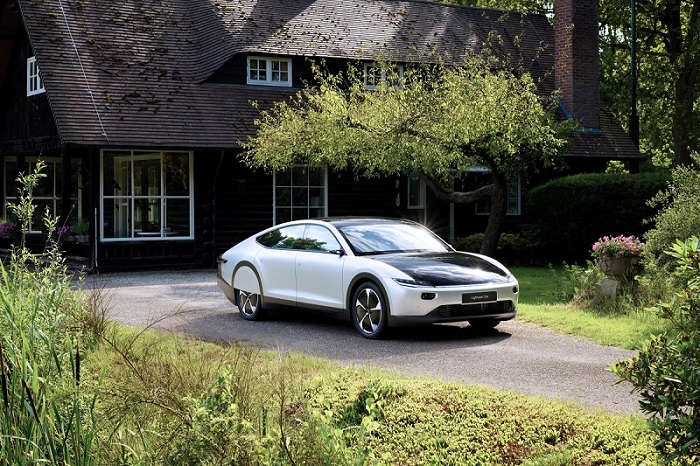The solar-powered automobile has emerged as a promising contender in the search for environmentally friendly and sustainable transportation options. The automotive industry is undergoing a paradigm shift towards renewable energy sources as a result of growing global concern over climate change and the depletion of fossil fuels. Solar-powered cars, which rely on the sun’s abundant energy, are leading this revolution. This article explores the development, difficulties, and promising future of solar-powered vehicles, illuminating the potential they hold for a more environmentally friendly future.
The Development of Solar-Powered Vehicles
Solar-powered vehicles have been a theoretical possibility since the 1970s, when scientists and engineers first started looking into alternative energy sources for transportation. The inefficiency of solar cells and the lack of technological advancements, however, limited the initial attempts. But as battery technology advanced and solar panel efficiency rose, interest in solar-powered vehicles increased.
The World Solar Challenge, a biennial solar-powered car race through the Australian Outback, was one of the most important turning points. This competition promoted innovation in solar technology and vehicle design while also showcasing the capabilities of solar-powered vehicles. Participants have created streamlined, aerodynamic cars with cutting-edge solar panels over the years, showcasing the capability of solar power to travel great distances.
Roadblocks to the Solar Revolution
Even though the thought of driving down the highway entirely on solar power is alluring, there are a number of obstacles that have prevented the widespread use of solar-powered vehicles.
Energy Efficiency: Solar panels have improved in efficiency, but they are still unable to produce enough power to drive a car for an extended period of time, particularly in poor weather or at night.
Energy storage is crucial for the later use of excess energy produced during the height of the solar day. For this obstacle to be cleared and continuous propulsion to be ensured, battery technology advancements are essential.
Weight and Design: It can be difficult to incorporate solar panels into a vehicle’s design without sacrificing its aerodynamics and aesthetic appeal. Overly large panels can increase weight and drag, which lowers overall efficiency.
Cost: The production and installation of solar panels, particularly those designed for vehicles with high efficiency, can be pricey. A significant challenge still exists in making solar-powered cars cost-competitive with conventional vehicles.
Infrastructure: It has been difficult to build a charging infrastructure for electric vehicles (EVs) alone. Including solar charging stations in this project adds yet another level of complexity.
Innovations Opening Up New Horizons
Despite these difficulties, amazing developments are bringing solar-powered cars into the mainstream.
Solar Skin Technology: Scientists are looking into how to incorporate very thin solar cells into the materials used to make car bodies, effectively converting the entire surface into a solar panel. This invention maintains the car’s aesthetics while also producing power.
Multiple Energy Sources: Some solar-powered vehicles are built to integrate solar energy with other renewable energies, like wind or kinetic energy recovery systems (KERS), to address energy variability.
Efficiency Boosters: Engineers are creating innovations that will increase the effectiveness of solar panels, such as solar concentrators that direct sunlight onto more compact, high-efficiency cells.
Lightweight Materials: Development of light, strong materials that increase vehicle efficiency without compromising safety is being aided by advances in material science.
Exciting Prospects for the Future as We Drive
The future of solar-powered vehicles is paved with promising possibilities that could completely change the way we travel:
Urban Mobility: Solar-powered vehicles are especially well-suited for city commuting because solar energy technology is currently most effective when travelling at slower speeds and covering shorter distances. They could lessen traffic congestion and significantly reduce emissions.
Long-Distance Travel: Thanks to improved energy storage and charging infrastructure along highways, solar technology is expected to advance to the point where solar power cars are practical for long-distance travel.
Energy Surplus: Vehicles with solar panels may produce extra energy that can be fed back into the grid or used to power homes in times of emergency. This technology is referred to as “vehicle-to-grid” technology.
Off-Grid Adventures: Solar-powered vehicles may make it possible to go off-grid and offer off-the-beaten-path communities lacking in traditional infrastructure a sustainable means of transportation.
Integration with Smart Cities: Solar-powered vehicles could easily communicate with infrastructure in smart city ecosystems to optimise energy use and traffic flow.
With ongoing research and innovation addressing the issues that have long prevented the development of solar-powered vehicles, the future of these vehicles appears bright. These vehicles may evolve from specialised concepts to commonplace substitutes as solar technology and battery efficiency advance. Solar-powered vehicles are a shining example of human ingenuity and our commitment to building a more sustainable world, even though there is still a long way to go. They may soon illuminate roads all over the world not only with their headlights but also with the brilliance of clean and renewable energy as they continue to develop.


